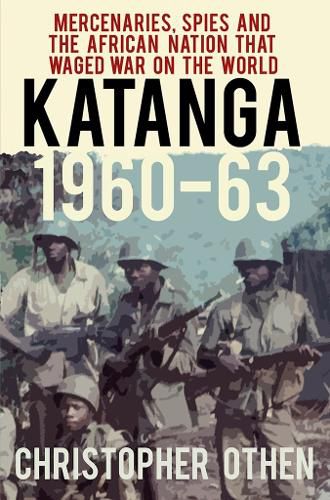Readings Newsletter
Become a Readings Member to make your shopping experience even easier.
Sign in or sign up for free!
You’re not far away from qualifying for FREE standard shipping within Australia
You’ve qualified for FREE standard shipping within Australia
The cart is loading…






The first full account of an African secession that introduced the modern mercenary and killed the head of the United Nations In King Leopold II’s infamous Congo Free State at the turn of the century, severed hands became a form of currency. But the Belgians don’t seem to have a sense of historical shame, as they connived for an independent Katanga state in 1960 to protect Belgian mining interests. What happened next was extraordinary. ‘Katanga 1960-63’ tells, for the first time, the full story of the Congolese province that declared independence and found itself at war with the world. The Congo had no intention of allowing the renegade region to secede, and neither did the CIA, the KGB, or the United Nations.
It was a fantastically uneven battle. The UN fielded soldiers from twenty nations, America paid the bills, and the Soviets intrigued behind the scenes. Yet to everyone’s surprise the new nation’s rag-tag army of local gendarmes, jungle tribesmen and, controversially, European mercenaries, refused to give in. For two and a half years Katanga, the scrawniest underdog ever to fight a war, held off the world with guerrilla warfare, two-faced diplomacy, and some shady financial backing. It even looked as if the Katangese might win. AUTHOR: Christopher Othen is a journalist, legal representative for asylum seekers, and English language teacher in Warsaw. He is the author of ‘Franco’s International Brigades: Adventurers, Fascists, and Christian Crusaders in the Spanish Civil War’, published in English and Spanish. SELLING POINTS: . Blood diamonds, organised European mercenaries, the 20th-century ‘Scramble for Africa’, CIA-sponsored African dictatorships, global corporations picking clean the bones of third world countries - this is the story of Katanga . For the first time includes interviews with surviving mercenaries, Congolese veterans, former United Nations peacekeepers from Sweden and Ireland, and Belgian settlers present during the fighting . Why was the USAF fighting this war? Simple: three-quarters of all the cobalt and one-half of the tantalum essential to build the very machines they were flying came from Katanga
25 b/w images and maps
$9.00 standard shipping within Australia
FREE standard shipping within Australia for orders over $100.00
Express & International shipping calculated at checkout
Stock availability can be subject to change without notice. We recommend calling the shop or contacting our online team to check availability of low stock items. Please see our Shopping Online page for more details.
The first full account of an African secession that introduced the modern mercenary and killed the head of the United Nations In King Leopold II’s infamous Congo Free State at the turn of the century, severed hands became a form of currency. But the Belgians don’t seem to have a sense of historical shame, as they connived for an independent Katanga state in 1960 to protect Belgian mining interests. What happened next was extraordinary. ‘Katanga 1960-63’ tells, for the first time, the full story of the Congolese province that declared independence and found itself at war with the world. The Congo had no intention of allowing the renegade region to secede, and neither did the CIA, the KGB, or the United Nations.
It was a fantastically uneven battle. The UN fielded soldiers from twenty nations, America paid the bills, and the Soviets intrigued behind the scenes. Yet to everyone’s surprise the new nation’s rag-tag army of local gendarmes, jungle tribesmen and, controversially, European mercenaries, refused to give in. For two and a half years Katanga, the scrawniest underdog ever to fight a war, held off the world with guerrilla warfare, two-faced diplomacy, and some shady financial backing. It even looked as if the Katangese might win. AUTHOR: Christopher Othen is a journalist, legal representative for asylum seekers, and English language teacher in Warsaw. He is the author of ‘Franco’s International Brigades: Adventurers, Fascists, and Christian Crusaders in the Spanish Civil War’, published in English and Spanish. SELLING POINTS: . Blood diamonds, organised European mercenaries, the 20th-century ‘Scramble for Africa’, CIA-sponsored African dictatorships, global corporations picking clean the bones of third world countries - this is the story of Katanga . For the first time includes interviews with surviving mercenaries, Congolese veterans, former United Nations peacekeepers from Sweden and Ireland, and Belgian settlers present during the fighting . Why was the USAF fighting this war? Simple: three-quarters of all the cobalt and one-half of the tantalum essential to build the very machines they were flying came from Katanga
25 b/w images and maps